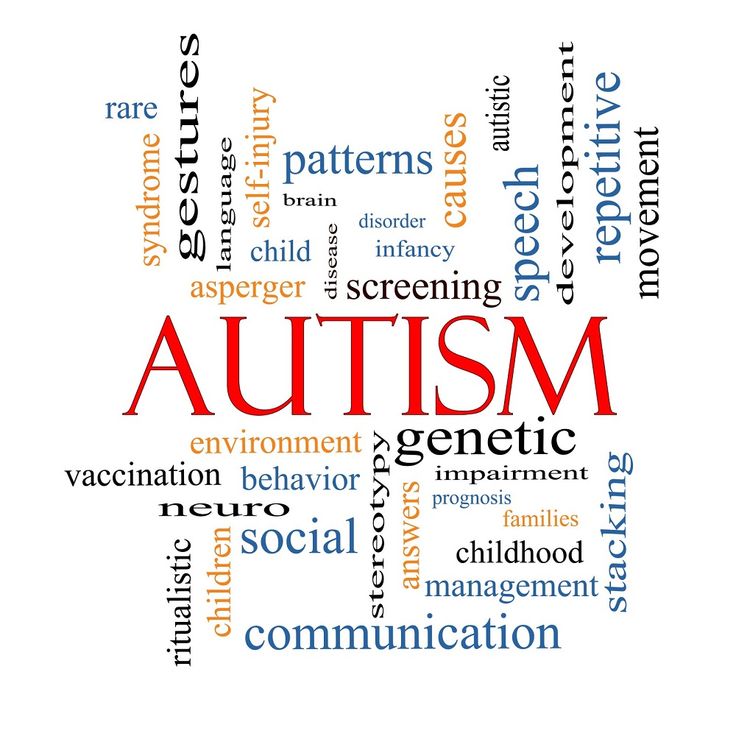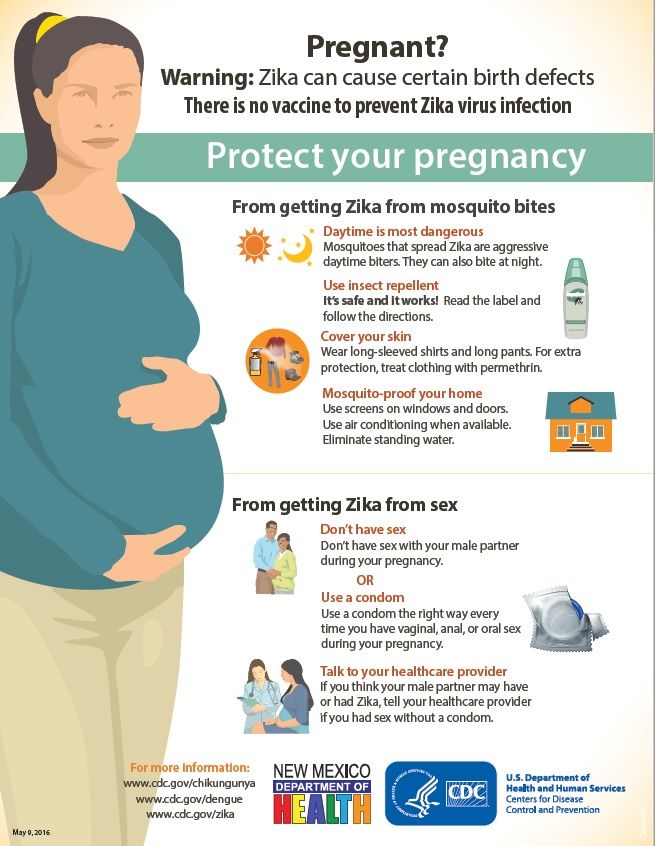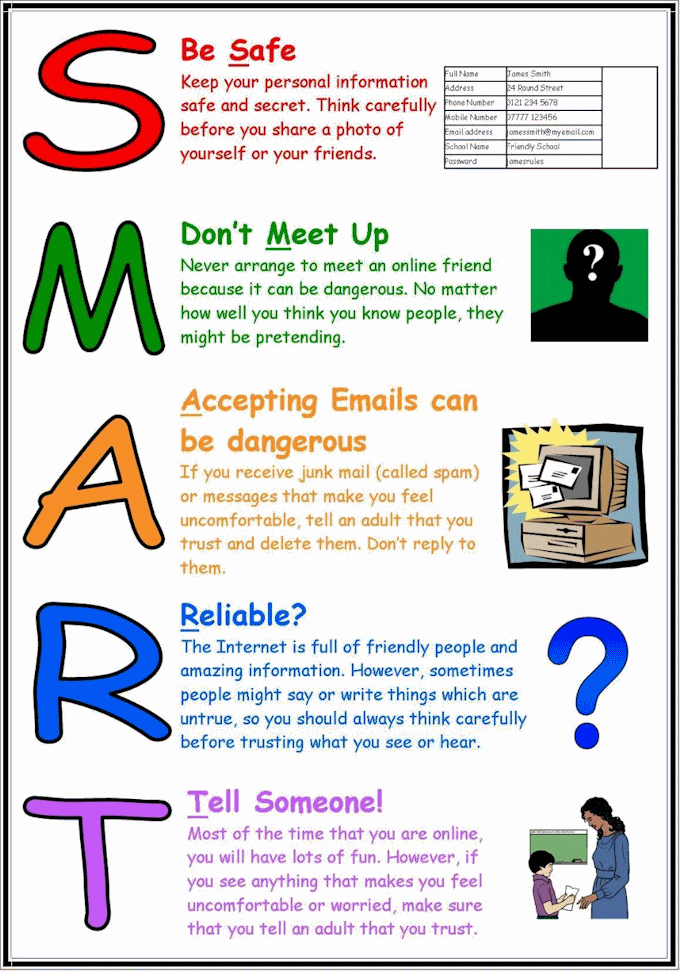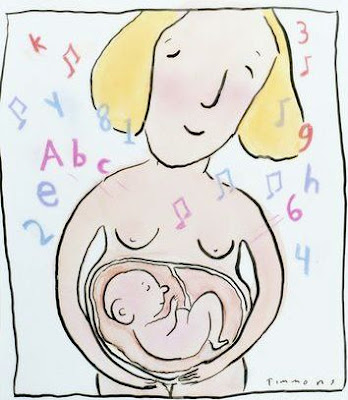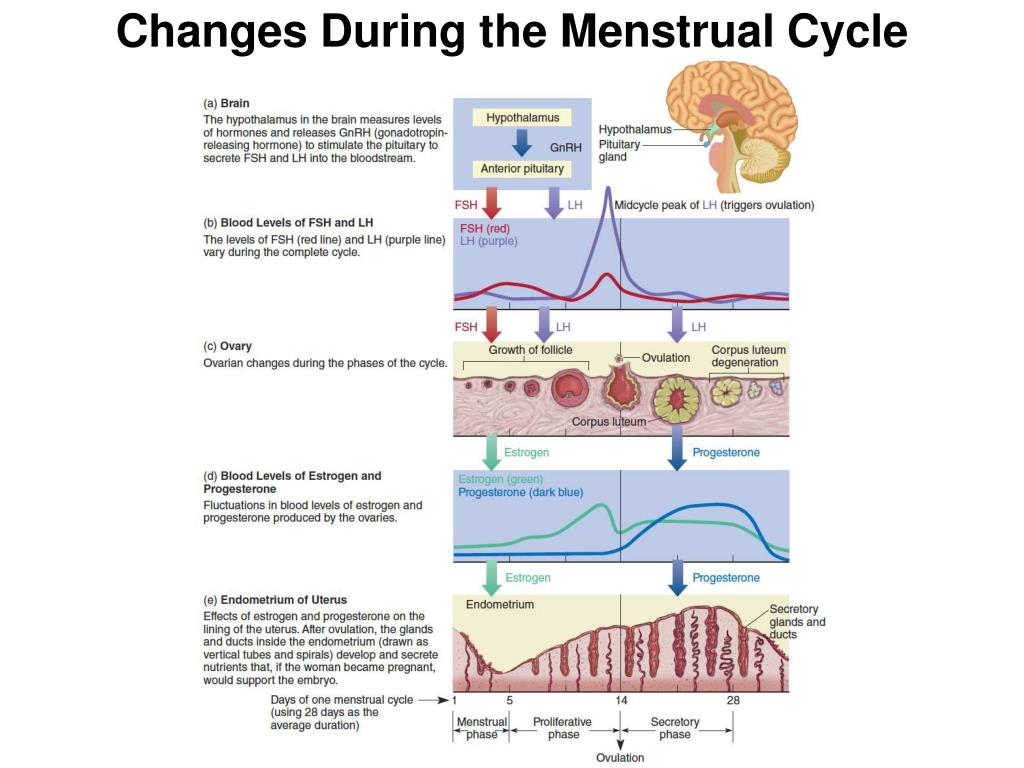How to discipline a child with autism spectrum disorder
How to Discipline a Child on the Autism Spectrum
The purpose of discipline is to set healthy boundaries and clear expectations of appropriate behavior, not to punish or embarrass your child.
While there are certainly challenges to disciplining a child on the autism spectrum, discipline instills valuable lessons that the child will take with them their whole lives. Keep reading to learn safe, effective, and compassionate strategies for how to discipline a child on the autism spectrum.
Two Words: Gentle Consistency
Children with autism pick up on things differently than other children. For example, your child may not pick up on the irritation in your voice when you ask them not to do something.
These misunderstandings can make traditional discipline techniques less effective. Your child might not understand the consequences of their actions, which can be frustrating. However, you should refrain from any kind of physical or verbal punishment that could have a negative effect on your child.
Instead, be gentle with your words and actions. If your child is screaming and having a tantrum, keep calm and don’t raise your voice. All children learn through imitation, so try and respond to your child’s behavior clearly and gently.
And now for consistency. Consistency is the key to safe, effective discipline. Most children with autism respond well to structured discipline, perhaps due to their desire for sameness and routine.
Consistent discipline can also alleviate some of your child’s anxiety, a common characteristic of autism. Consistent outcomes help children feel secure and confident in their choices.
If your child knows what to expect from a certain behavior (Mom won’t like that I ate cookies before dinner), they may not feel as overwhelmed when you discipline them.
In other words, consistency gives your child the ability to predict the outcome of a situation, which is a powerful and necessary step toward independence.
Educate Yourself About Your Child’s Condition
You’ll need to do some research before fully understanding how to discipline a child on the autism spectrum.
Read up on the condition to make sure you’re setting realistic expectations for your child. Some behaviors cannot be “disciplined away” by a parent, and should instead be evaluated by a professional.
For example, self-stimulation (spinning, hand flapping, etc.) is very common in children with autism. These behaviors help them regulate their emotions, and you could do more harm than good by punishing them for doing it.
Remember that autism exists on a spectrum, meaning every child will experience different symptoms in different ways. It’s a good idea to speak with other parents whose children have autism. You’ll get a better idea of how to set expectations, especially if you speak with a parent whose child has symptoms similar to yours.
Discipline Strategies for Children with Autism
Rewards and Consequences
Commonly used in Applied Behavior Analysis (ABA) therapy, rewards and consequences are one of the most effective techniques for discipline.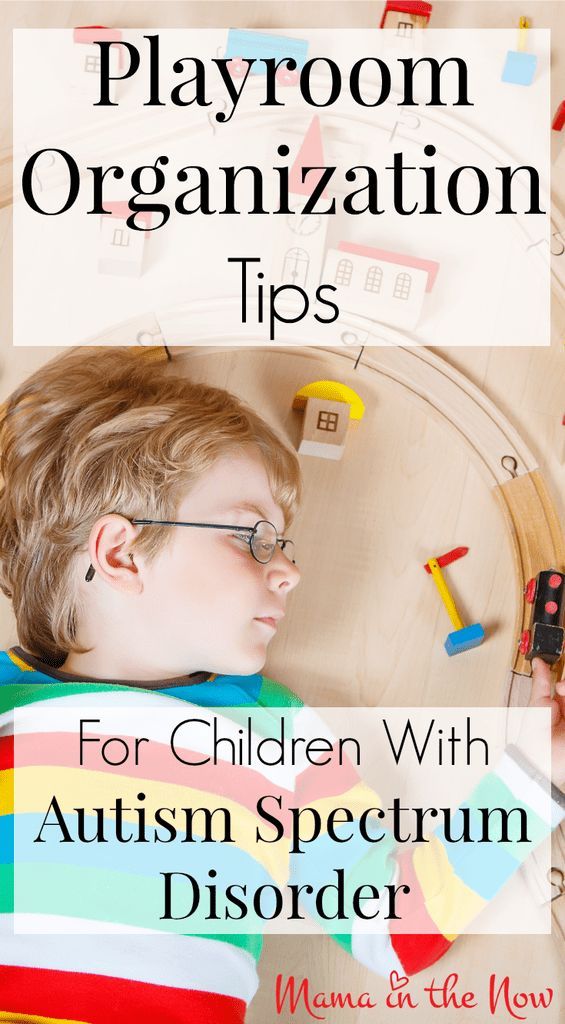
The goal of rewards and consequences is to increase or decrease the likelihood of your child performing a certain behavior. When your child performs the desired behavior or task, you offer them a “reward” – a positive reinforcer.
When they do not perform the desired behavior or task, you point them in the right direction with a consequence.
For example, you can offer your child candy or extra TV time for cleaning their room after being asked. That is an example of a positive reinforcer. If they don’t clean their room after being asked, you can take away some of their TV time or send them to time-out. That is the consequence.
Of course, you’ll have to evaluate which consequences are appropriate for your child. For instance, some children with autism prefer being alone, so sending them to time-out could actually be a reward for them.
Set Clear Expectations
Children with autism often have trouble understanding which behaviors are expected of them.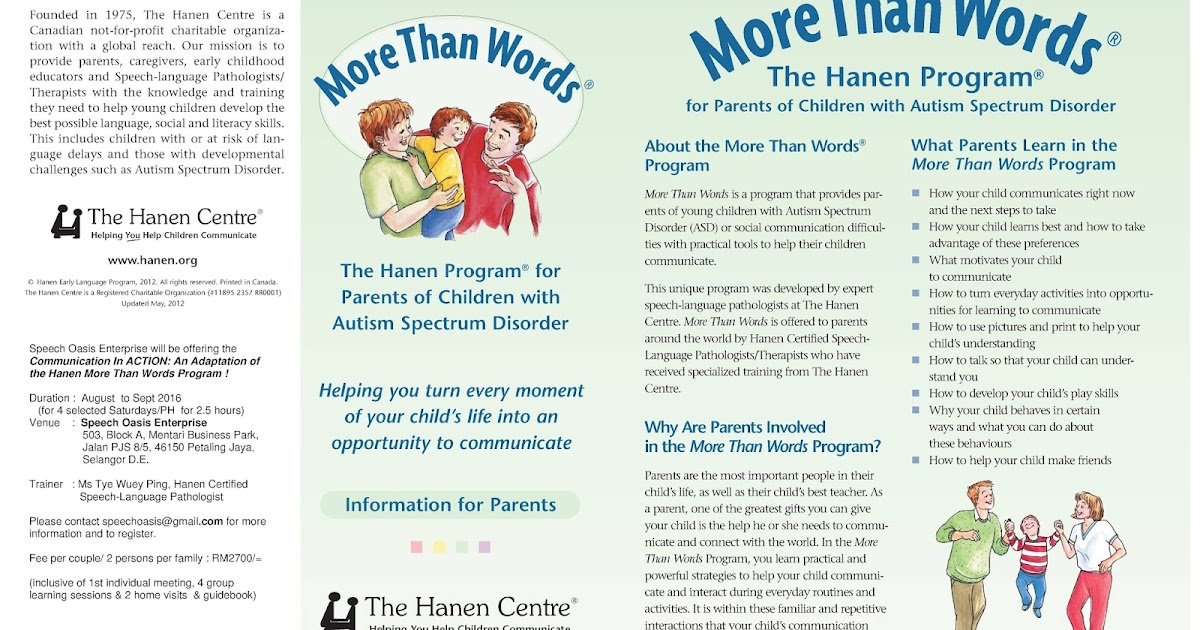 For example, a child may not understand that they should say “hello” back to someone who greets them.
For example, a child may not understand that they should say “hello” back to someone who greets them.
You can help your child learn these behaviors by clearly communicating your expectations. You may need to create visual cues or do role-playing until your child is comfortable.
For example, if your child is late getting ready every morning because they’re playing with their toys, you can explain that they can play only after they are ready for school. You can set a timer showing your child how much time is left before they need to leave for school, and after they finish getting ready, they can play until the timer runs out.
Be Positive
Positivity inspires positive actions. If you offer praise and encouragement when your child behaves well, they’ll want to keep behaving well.
Encourage your child by reminding them what they can earn or receive for meeting their goals. Praise your child when they perform good behavior, and describe exactly what it is you’re praising. This is called “descriptive praise,” and it helps children understand appropriate and inappropriate behavior. For example, “Great job asking Dylan nicely for your toy when he took it from you.”
This is called “descriptive praise,” and it helps children understand appropriate and inappropriate behavior. For example, “Great job asking Dylan nicely for your toy when he took it from you.”
You can also praise children for their efforts, not just the final result.
Most children with autism enjoy praise, but some may not respond, especially if they tend to withdraw from others. They probably aren’t motivated or interested in doing things to please other people, so you can help your child learn how to respond to praise. You can tell them what they did well and then give them their favorite toy. This way, they’ll come to regard praise as something good.
Seek Professional Help
Whenever possible, you should seek professional help from an autism center or therapy provider. The above ways to discipline a child on the autism spectrum can be extremely helpful at home, but children with autism benefit the most from intensive therapy.
Therapy solidifies the foundation you build at home, and it is hugely beneficial for development and independence in children with autism.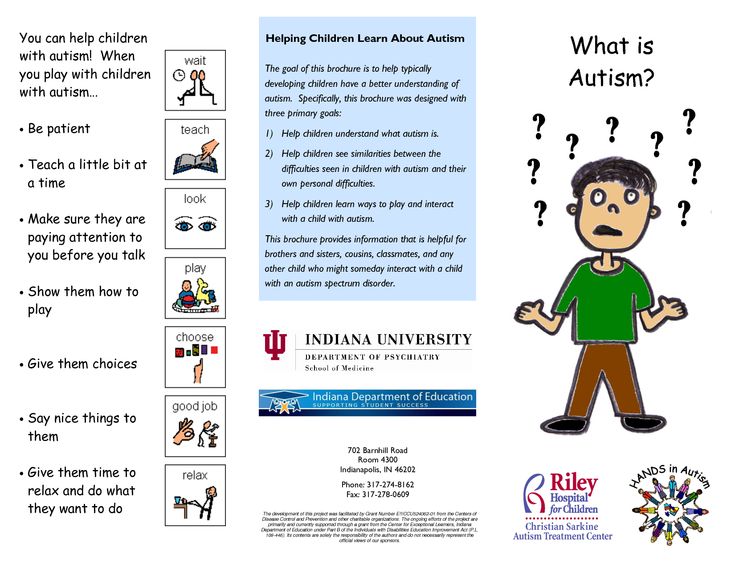 For more information about the intensive, compassionate care we provide at Therapeutic Pathways, contact (209) 422-3280.
For more information about the intensive, compassionate care we provide at Therapeutic Pathways, contact (209) 422-3280.
Discipling a Child on the Autism Spectrum
Discipline teaches children to do the right thing and think and act for themselves. It can be difficult to discipline a child who has autism, but doing so will help teach them the skills they need to live an independent life.
6-Step Approach to Disciplining a Child with Autism, ASD
It’s one of those moments you dread.
It’s the holidays, and your house is filled with relatives eating and chatting.
Suddenly something small and hard hits you in the cheek.
And then your head.
Your ten-year-old child is throwing crayons at you.
Now he steals a handful of crayons from one of the cousins and chucks them all right at you, while your visitors (and your mother-in-law!) stare.
What do you do?
The good news is that ABA offers some very successful methods to deal with this sort of situation.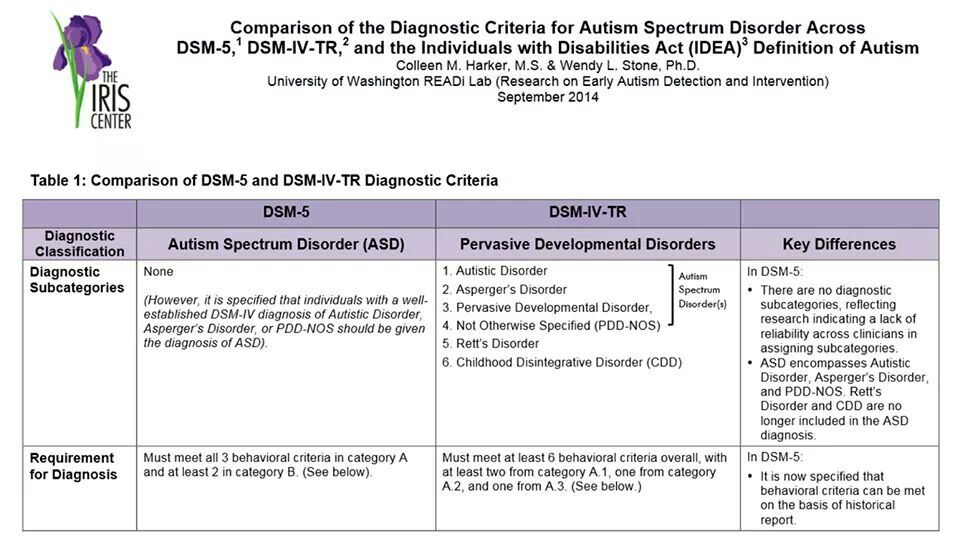
George Mason University
Featured Program: Online Applied Behavior Analysis Graduate Certificate
Request Info
Arizona State University
Featured Program: Applied Behavioral Analysis, Graduate Certificate
Request Info
Pepperdine University
Featured Program: Master's in Applied Behavior Analysis online - Become a BCBA in as few as 27 months. ABAI-verified. No GRE required.
Request Info
Purdue University Global
Featured Program: Bachelor of Science in Psychology in Applied Behavior Analysis - Postbaccalaureate and Postgraduate Certificate
Request Info
Capella University
Featured Program: MS in Applied Behavior Analysis
Request Info
Arcadia University
Featured Program: Take the next step towards becoming licensed in your field with the online M. Ed. in Applied Behavior Analysis program from Arcadia University.
Ed. in Applied Behavior Analysis program from Arcadia University.
Request Info
Simmons School of Nursing and Health Sciences
Featured Program: Online Master's in Behavior Analysis
Request Info
Regis University
Featured Program: Build your skills; build your character. With Regis University's B.S. in Applied Psychology, you can help your community cope and thrive in the modern world.
Request Info
It’s important to understand from the start that ABA is not a system of discipline, nor does it focus on discipline. Instead, ABA seeks to understand the why behind the unwanted behaviors, and the how for giving your child the tools they need to start choosing preferred behaviors.
Does that sound like more work than a quick spanking or time out? Yep. That’s because it is. But the long-term pay off will be so much greater!
Each child is unique and depending on where your child lands on the spectrum methods will need to be adjusted to fit the needs of each child.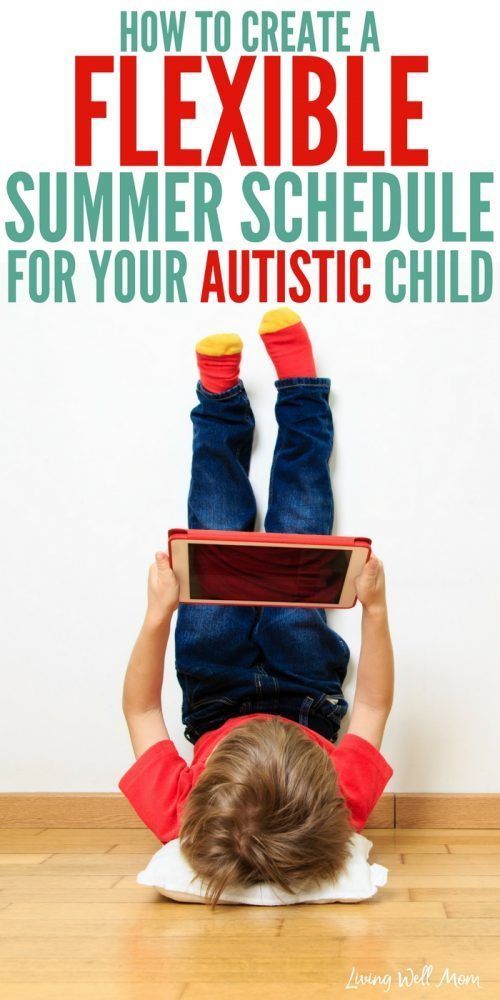 Please use this information as supplemental help while also working with a licensed ABA or BCBA therapist.
Please use this information as supplemental help while also working with a licensed ABA or BCBA therapist.
How to Correct Problem Behavior
Step 1. RECOGNIZE
Problem behaviors are generally the child trying to communicate something. Simply “punishing” the behavior won’t bring about long-term results.
A child with autism generally won’t respond to authority in the same way a neurotypical child would, and many traditional methods will likely backfire in the long run.
Strong reactions from you will probably reinforce the behavior instead of deter it. If your voice gets louder, your face turns red or you wave your arms you’re suddenly very interesting. Instead of feeling chastised, your child may be curious and repeat the behavior to see what kind of show you’ll put on next.
Step 2. REFRAMEYour interpretation of the “why” behind the behavior might be increasing your own anger… and it might be wrong.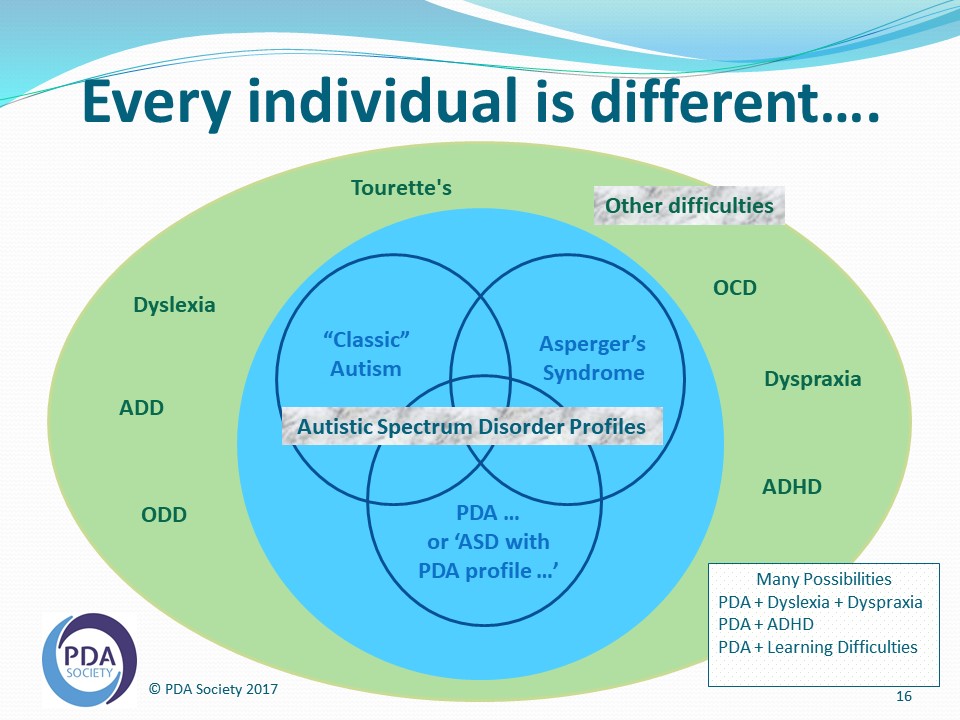
It’s possible that what you observe as disrespectful might actually be your child’s reaction to physical pain or an inability to clearly express legitimate needs.
FIND SCHOOLS
Sponsored Content
Step 3. RESEARCHLook for patterns to see what your child might be trying to say. What happened immediately before the problem behavior? It might be as obvious as you refusing to buy a donut or as subtle as sensory overload each time Aunt Agatha hugs your child.
Step 4. REINFORCE & PUNISHBehaviors have consequences. You will need to create a behavior plan that includes what we in the ABA professional community refer to as reinforcers and punishments in order to begin the change process.
Reinforcers are consequences that increase the likelihood of the behavior repeating. If your child knows that by not melting down in the store he gets to play with a favorite toy on the car ride home, the toy is the reinforcing consequence.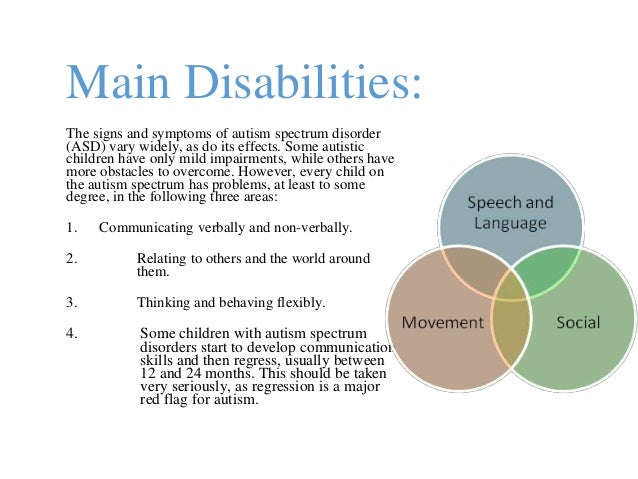 It increases positive behavior.
It increases positive behavior.
Punishments are consequences that make your child less likely to repeat a behavior. If your child hits their sibling while playing with blocks, you remove access to what they want: the blocks and a playmate.
Step 5. REPEATOnce your plan is in place, follow through. Consistency is the key to making this work, so you will need to repeat the same steps multiple times before you start to see a change.
Things will probably get worse before they get better, but if you persist it will work.
Step 6. REQUESTBecause autism has neurological roots some sensations are truly painful for your child.
In all likelihood, your child’s behavior is a visceral reaction to some kind of trigger. It’s worth putting in the effort to try to pin down what that trigger might be.
The solution to a major meltdown could be as simple as asking Aunt Agatha to avoid wearing perfume when she comes over.
But What Do I Do
RIGHT NOW?IGNORE … If you know the behavior isn’t in response to true physical pain, and the behavior is non-harmful, seek to ignore it. For example, if your child is throwing crayons at you get up and walk out of the room. Any verbal discipline or chastisement actually reinforces what your child most likely wanted…your attention!
After some time away from the child, return to the room and offer your presence.
REMOVE … Until you start practicing ABA principles at home and preparing your child for upcoming triggers, you may need to remove your child from the situation. This may mean that in the short term you leave the store without finishing your grocery list or your child goes to his room until visitors leave the house.
Remember… ABA is all about working toward long-term changes in behavior, and sometimes short-term solutions will only prolong the change process.
For some children time outs are effective both at home and in public.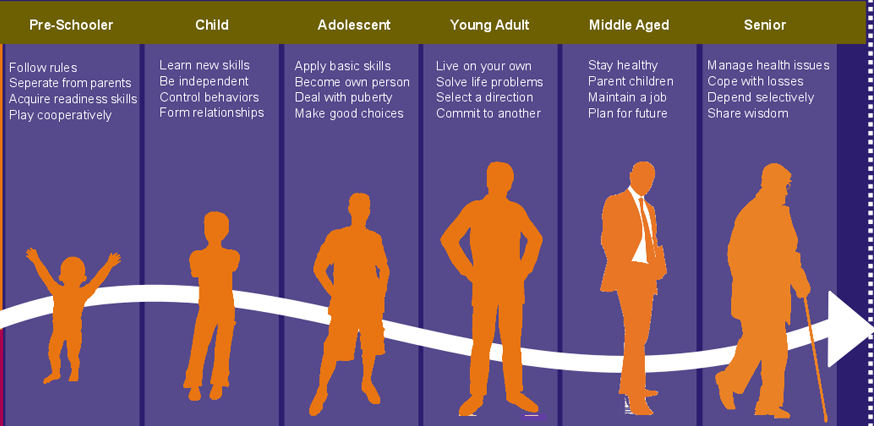 However, they are only part of the story and alone will not result in long-term change.
However, they are only part of the story and alone will not result in long-term change.
Spanking is highly discouraged when working with children with autism.
Why? Because your child’s final takeaway will be that when others do something they don’t like, they can respond physically. This can lead to hitting other children or throwing rocks on the playground when they are upset.
FIND SCHOOLS
Sponsored Content
In addition, spanking fails to take into account the reality that your child may be acting out because he or she is truly in pain or experiencing a valid need.
Instead, we want to give our children the tools to respond to the situation appropriately and be able to tell us what is wrong.
How can I help my child understand their autism spectrum disorder?
9/18/16
ASD consultant, mother of a child with ASD, and adult woman with Asperger's on how to talk to a child about their diagnosis
Author: Dena Gassner / Denacon Gassner
Source: ExpertBeacon
Helping your child understand their autism spectrum disorder (ASD) is the foundation for personal well-being and the ability to represent their interests in the future.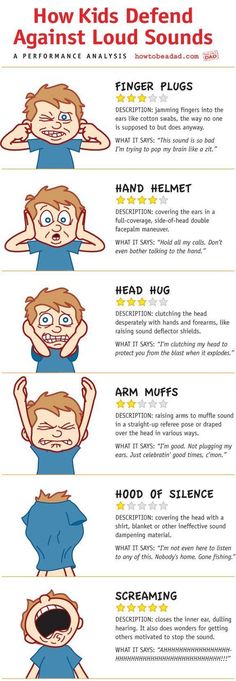 Many parents don't tell children with ASD about their diagnosis until some kind of crisis or conflict arises, and as a result, the children form a strong association between their features and something very bad.
Many parents don't tell children with ASD about their diagnosis until some kind of crisis or conflict arises, and as a result, the children form a strong association between their features and something very bad.
Instead, parents should be as neutral as possible about the child's diagnosis, explaining what it means that the child feels and behaves differently than most other people. The duty of parents to explain the characteristics of the child, up to his allergies and food intolerances, in understandable words. You should never talk to a child about his diagnosis, expressing at the same time grief, sadness and a desire for everything to be different. There is what is. It's not "bad" but it's not "good" either, it's just a fact of life and your journey together.
Here are some tips that can help parents prepare to talk to their children about what it means to live with ASD.
Show unconditional love
If you show fear, sadness and dissatisfaction when talking about a child's life, it will sound to him as if he himself causes you fear, sadness and discontent. It is important to help your child achieve the best results for him - this goal is suitable for any person, but "normality" cannot be a goal in itself.
It is important to help your child achieve the best results for him - this goal is suitable for any person, but "normality" cannot be a goal in itself.
Do not compare the child with other children
Do not emphasize what you think other children can do, emphasize what your child can do. If your child cannot eat in the dining room with their peers, then you can give up on this.
Focus on the child's strengths and talents
Pay close attention to the child's strengths, while remembering to talk to him about his difficulties. For example, if a child is excellent at geography, reassure him that no one in his class knows so many geographical facts, and that's great. But at the same time, talk to him about the fact that if he only talks about geography or if he talks too much about it, then this can annoy other people.
Look for people who can be role models for your child
Help your child get to know the autistic community and find autistic adults who can be role models for him.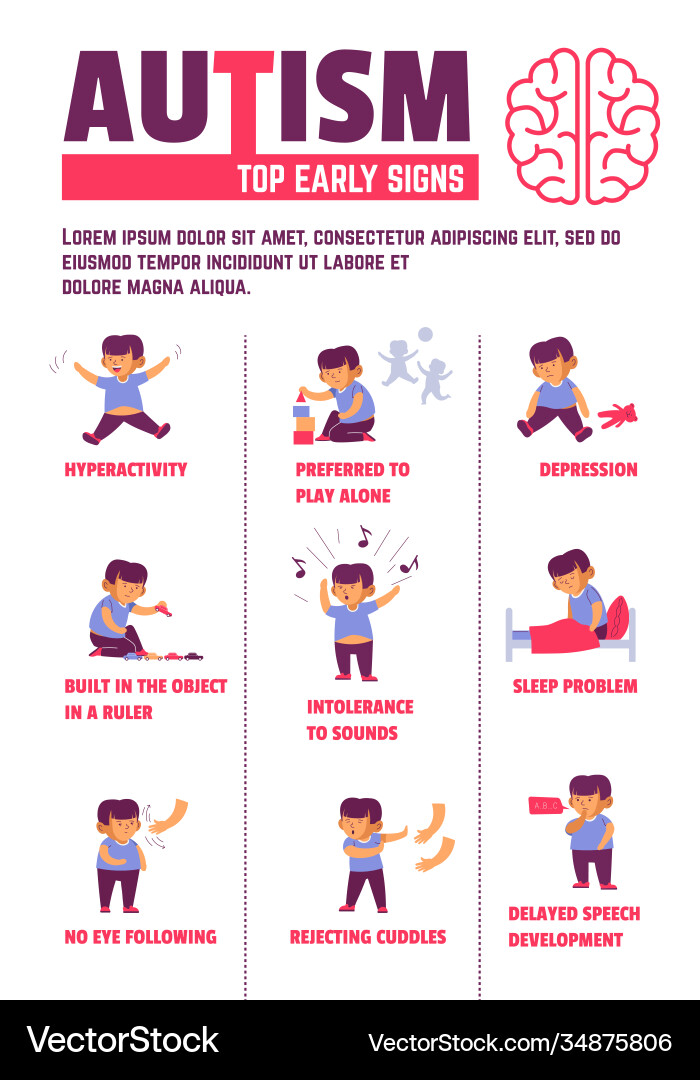 The feeling that you are “one of a kind” can become very painful for the child and lead to isolation. The feeling of "community" and belonging to a certain group can improve his mental health. Even various online programs can fulfill this role.
The feeling that you are “one of a kind” can become very painful for the child and lead to isolation. The feeling of "community" and belonging to a certain group can improve his mental health. Even various online programs can fulfill this role.
Don't hide your child's diagnosis
Don't whisper or abbreviate a word, or hide autism or Asperger's from your child. This behavior suggests that ASD should be feared and ashamed. Talk about the diagnosis as needed, as well as about other features of the child.
Do not be afraid that the child will use the diagnosis as an excuse
There will always be something that is harder for your child than for other people. It is very important that he learns to talk about the fact that something is difficult for him, in an understandable and accessible way.
Try not to convey your own grief to your child
Grief over a diagnosis is a normal process, but for the sake of your child, you will have to overcome it: you cannot explain a diagnosis to a child and cry at the same time.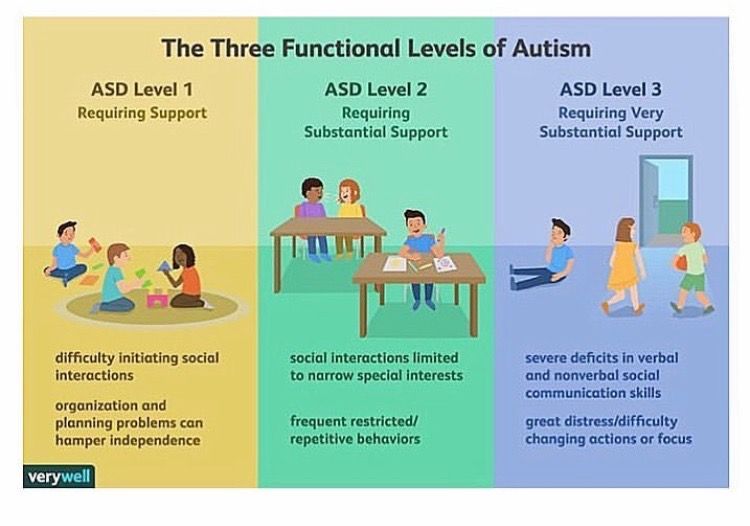 If necessary, try to find professional psychological help.
If necessary, try to find professional psychological help.
Don't deny your child's autistic identity
It is important for a child with ASD to understand who they are and how the diagnosis affects their life. For example, it is important for a child to realize that it is more difficult for him to write by hand than his peers, that he gets tired more quickly while writing, but this is due to ASD, and not because he is “stupid” and therefore writes the slowest in the class. It is one thing to understand that your body is not well adapted for writing by hand, and therefore you have to try harder while writing, and it is quite another thing to think that you are bad at writing because you “do not try.” A correct understanding also encourages looking for a better solution, such as typing on a computer rather than writing by hand.
Don't keep secrets from your child. Help him gradually develop his own understanding of ASD so that the child can explain the diagnosis to others in his own way.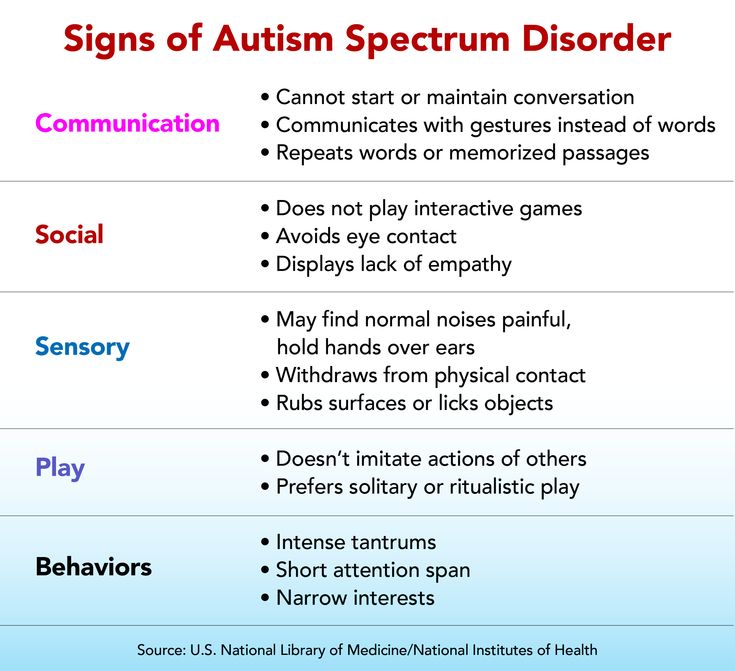 Failure to understand such important information about oneself leads to a host of psychological problems, including various fears and helplessness. Knowledge is the key to success.
Failure to understand such important information about oneself leads to a host of psychological problems, including various fears and helplessness. Knowledge is the key to success.
We hope that the information on our website will be useful or interesting for you. You can support people with autism in Russia and contribute to the work of the Foundation by clicking on the "Help" button.
Parenting with Autism, Autistic Notes, First Person, Asperger's Syndrome
Autism Spectrum Disorders in Children
home
Articles
Diseases
Alpatsky Dmitry Aleksandrovich Neurologist, epileptologist, EEG doctor
07.12.2015
Often, mothers come to the doctor with complaints of delayed speech development in a child. But in some children, with a close look, the specialist, in addition, sees the features of the child's behavior that differ from the norm and are alarming .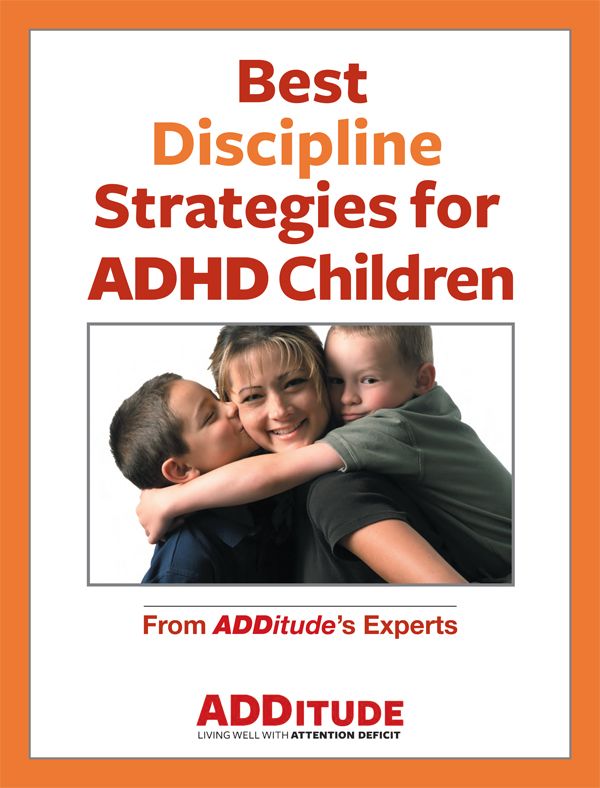
Consider a clinical example:
Boy S. Age 2 years 9 months. According to the mother, the child's vocabulary is no more than 20 separate words, consisting of two or three syllables. There are no phrases. Mom says that the child often has tantrums, is restless, it is difficult to fall asleep. The child's mother has no other complaints. On examination, the doctor notices that the child does not look into the eyes, is constantly in motion, reacts with a cry if something is not given or forbidden to him. You can calm the child only by giving him a mobile phone or tablet. Shows interest not in children's toys, but more in shiny pieces of furniture and interior. Starting to play something, quickly loses interest and switches to something else. Asking the mother, it turns out that the child is very selective in food. Not accustomed to the potty, defecation only in a diaper in a standing position. Difficulty falling asleep and waking up during sleep. The child underwent Electroencephalography and consultations with a clinical psychologist and a speech therapist.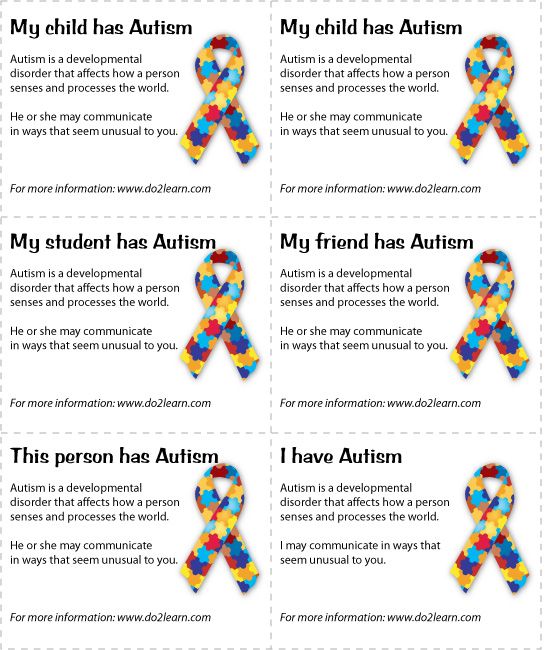 Based on the results of the diagnosis and the clinical picture, the diagnosis was made - Autism Spectrum Disorder.
Based on the results of the diagnosis and the clinical picture, the diagnosis was made - Autism Spectrum Disorder.
Autism Spectrum Disorders (ASD) are complex disorders of mental development that are characterized by social maladaptation and inability to social interaction, communication and behavioral stereotypy (multiple repetitions of monotonous actions).
Back in the middle of the last century, autism was a fairly rare disease. But over time, more and more children suffering from this disorder began to appear. Statistics show that the incidence of ASD in children over the past 30-40 years in countries where such statistics are carried out has risen from 4-5 people per 10,000 children to 50-116 cases per 10,000 children. At the same time, boys are more susceptible to this disease than girls (approximately 4:1 ratio).
Causes of RAS.
All over the world, until today, scientists studying the causes of autism have not come to a consensus.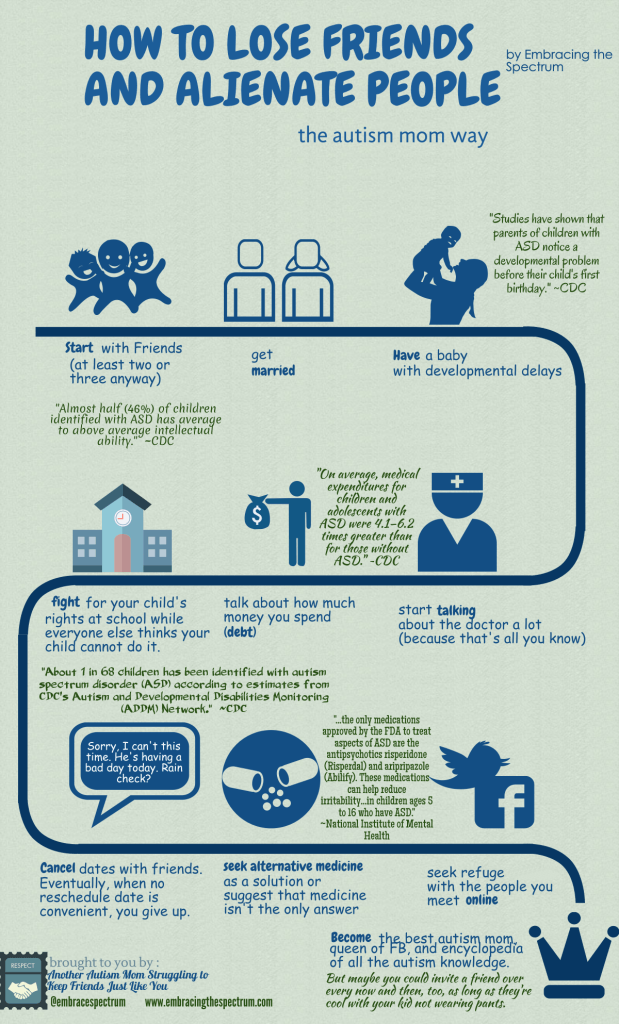 Many assumptions are put forward. Among the possible factors for the appearance of this disorder in children are some hypotheses:
Many assumptions are put forward. Among the possible factors for the appearance of this disorder in children are some hypotheses:
- genetic predisposition hypothesis
- a hypothesis based on disorders of the development of the nervous system (autism is considered as a disease caused by disorders of brain development in the early stages of a child's growth).
- hypotheses about the influence of external factors: infections, chemical effects on the mother's body during pregnancy, birth trauma, congenital metabolic disorders, the influence of certain drugs, industrial toxins.
But whether these factors really can lead to the appearance of autism in children has not yet been clarified.
Features of the mental development of children with ASD.
To understand and recognize the presence of autism in a child, parents need to carefully monitor the behavior of the child, notice unusual signs that are not characteristic of the age norm. Most often, these signs can be detected in children under the age of 3 years.
Most often, these signs can be detected in children under the age of 3 years.
Childhood autism is considered as a developmental disorder that affects all areas of the child's psyche: intellectual, emotional, sensitivity, motor sphere, attention, thinking, memory, speech.
Disorders of speech development : at an early age, the absence or weak cooing and babbling can be noted. After a year, it becomes noticeable that the child does not use speech to communicate with adults, does not respond to a name, and does not follow verbal instructions. By the age of 2, children have a very small vocabulary. By the age of 3 they do not build phrases or sentences. At the same time, children often stereotypically repeat words (often incomprehensible to others) in the form of an echo. Some children have a lack of speech development. For others, speech continues to develop, but there are still communication impairments. Children do not use pronouns, address, speak about themselves in the third person.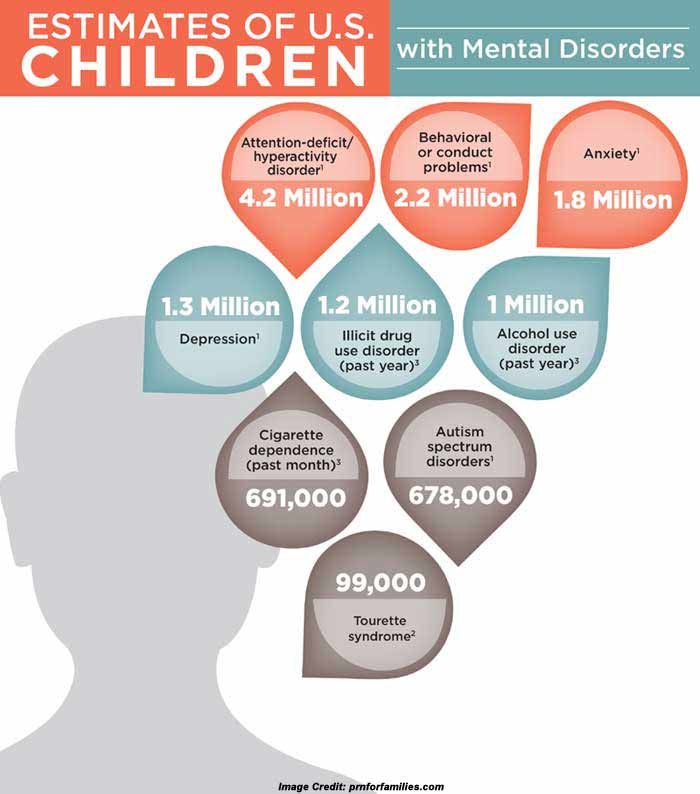 In some cases, there is a regression of previously acquired speech skills.
In some cases, there is a regression of previously acquired speech skills.
Difficulties in communication and lack of emotional contact with others: Such children avoid tactile contact, there is almost no eye contact, there are inadequate facial reactions and difficulties in using gestures. Children most often do not smile, do not reach out to their parents and resist attempts by adults to take them in their arms. Children with autism lack the ability to express their emotions, as well as to recognize them in the people around them. There is a lack of empathy for other people. The child, along with the adult, does not focus on one activity. Children with autism do not make contact with other children or avoid it, they find it difficult to cooperate with other children, most often they tend to retire (difficulties in adapting to the environment).
H violation of exploratory behavior: children are not attracted by the novelty of the situation, are not interested in the environment, are not interested in toys.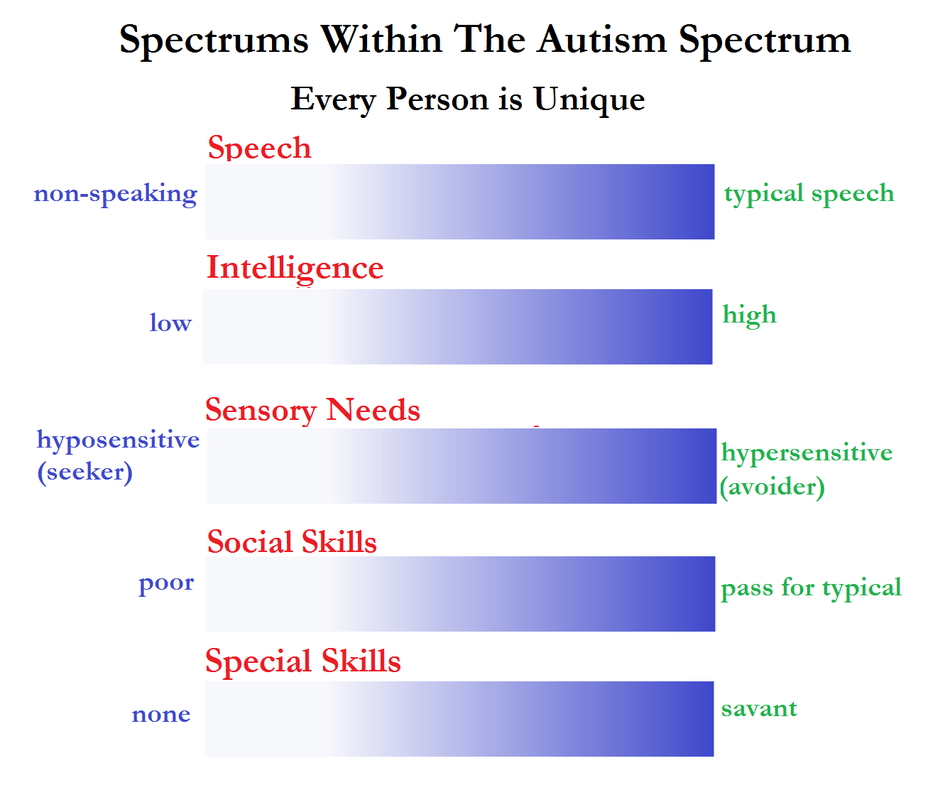 Therefore, children with autism most often use toys in an unusual way, for example, a child may not roll the whole car, but turn one of its wheels monotonously for hours. Or not understanding the purpose of the toy to use it for other purposes.
Therefore, children with autism most often use toys in an unusual way, for example, a child may not roll the whole car, but turn one of its wheels monotonously for hours. Or not understanding the purpose of the toy to use it for other purposes.
Eating disorders : a child with autism can be extremely selective in the products offered, food can cause the child to be disgusted, dangerous, often children begin to sniff food. But along with this, children may try to eat an inedible thing.
Violation of self-preservation behavior: due to a large number of fears, the child often finds himself in a situation that is dangerous for himself. The cause can be any external stimulus that causes an inadequate reaction in the child. For example, a sudden noise may cause a child to run in a random direction. Also, the reason is ignoring real threats to life: a child can climb very high, play with sharp objects, cross the road without looking.
Disturbance of motor development: as soon as the child begins to walk, he is noted for clumsiness.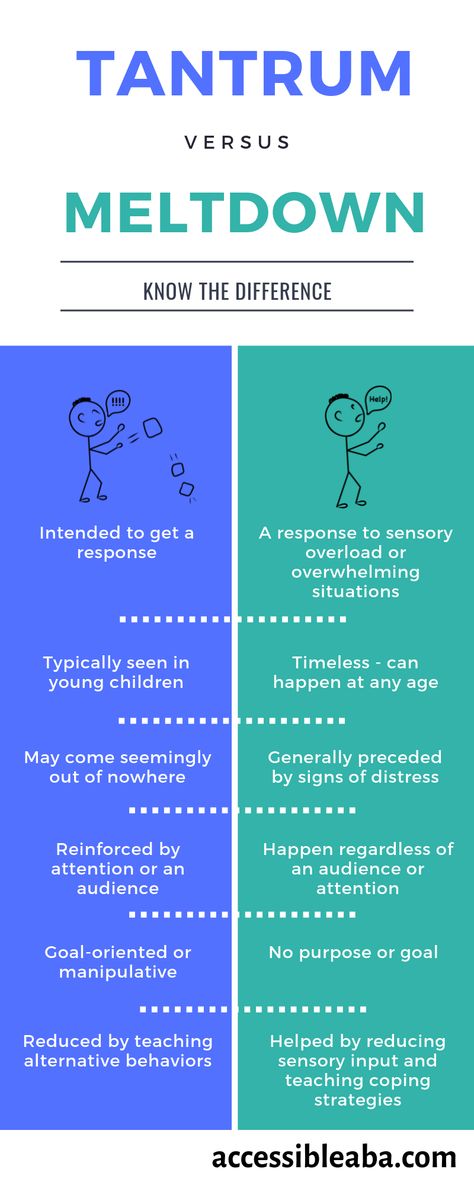 Also, some children with autism are inherent in walking on their toes, a very noticeable violation of the coordination of hands and feet. It is very difficult for such children to teach everyday actions, it is rather difficult for them to imitate. Instead, they develop stereotypical movements (performing the same actions for a long time, running in circles, swinging, flapping “like wings” and circular movements with their arms), as well as stereotypical manipulations with objects (tweaking small details, lining them up). Children with autism have significant difficulty in learning self-care skills. Pronounced motor awkwardness.
Also, some children with autism are inherent in walking on their toes, a very noticeable violation of the coordination of hands and feet. It is very difficult for such children to teach everyday actions, it is rather difficult for them to imitate. Instead, they develop stereotypical movements (performing the same actions for a long time, running in circles, swinging, flapping “like wings” and circular movements with their arms), as well as stereotypical manipulations with objects (tweaking small details, lining them up). Children with autism have significant difficulty in learning self-care skills. Pronounced motor awkwardness.
Perception disorders: difficulties in orientation in space, fragmentation in the perception of the environment, distortion of a holistic picture of the objective world.
Difficulty in concentrating: children have difficulty concentrating on one thing, there is high impulsivity and restlessness.
Poor memory: Often, both parents and professionals notice that children with autism remember well what is meaningful to them (this may cause them pleasure or fear).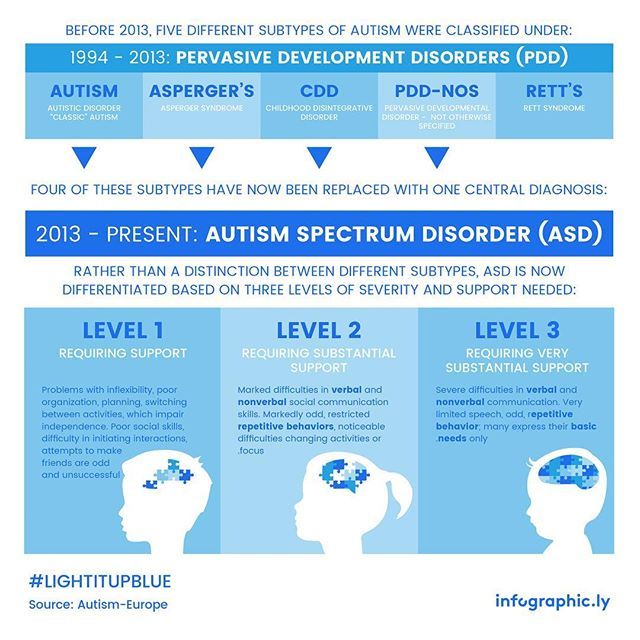 Such children remember their fear for a long time, even if it happened a very long time ago.
Such children remember their fear for a long time, even if it happened a very long time ago.
Features of thinking: specialists note difficulties in arbitrary learning. Also, children with autism do not focus on understanding the cause-and-effect relationships in what is happening, there are difficulties in transferring the acquired skills to a new situation, the concreteness of thinking. It is difficult for a child to understand the sequence of events and the logic of another person.
Behavioral problems: negativism (refusal to listen to instructions from an adult, to perform joint activities with him, avoiding a learning situation). Often accompanied by resistance, screams, aggressive outbursts. A huge problem is the fears of such children. Usually they are incomprehensible to others, because often children cannot explain them. The child may be frightened by sharp sounds, some specific actions. Another behavioral disorder is aggression. Any disorder, violation of a stereotype, interference of the outside world in a child's life can provoke aggressive (hysteria or physical attack) and auto-aggressive outbursts (damage to oneself).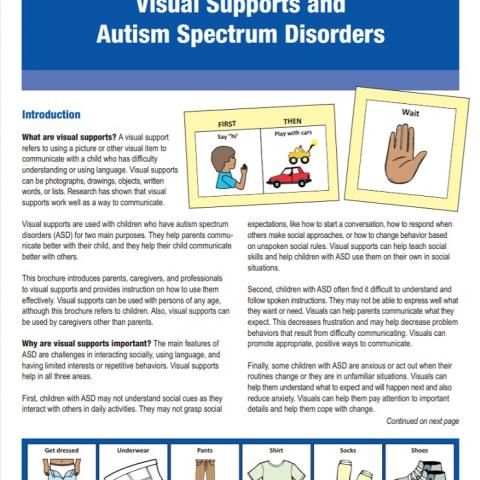
Each case of the disease is very individual: autism can have most of the listed signs in an extreme degree of manifestation, and it can manifest itself only in some barely noticeable features.
Diagnosis of Autism Spectrum Disorders
To diagnose autism, specialists use the criteria of 2 international classifications: ICD-10 and DSM-5.
But the main three criteria (“triad” of violations) that can be distinguished are:
- violation of social adaptation
- violations in the communication sphere
- stereotypical behavior
The main diagnostic steps include:
- examination of the child by a psychiatrist, neurologist, psychologist
- observation of the child and filling out the "Autism Rating Scale", which can be used to determine the severity of the disorder
- conversation with parents
- filling in questionnaires by parents - "Questionnaire for the diagnosis of autism"
Species PAC
There are several existing classifications of ASD, and the separation often occurs on completely different grounds, which, of course, can bring some inconvenience to a person who is initially little familiar with medicine or psychology; therefore, the most basic and frequently encountered types of ASD will be highlighted below: - Kanner's syndrome (Early childhood autism) - characterized by a "triad" of the main violations: difficulty in establishing contacts with the outside world, stereotypical behavior, as well as a delay or violation of the communicative functions of speech development .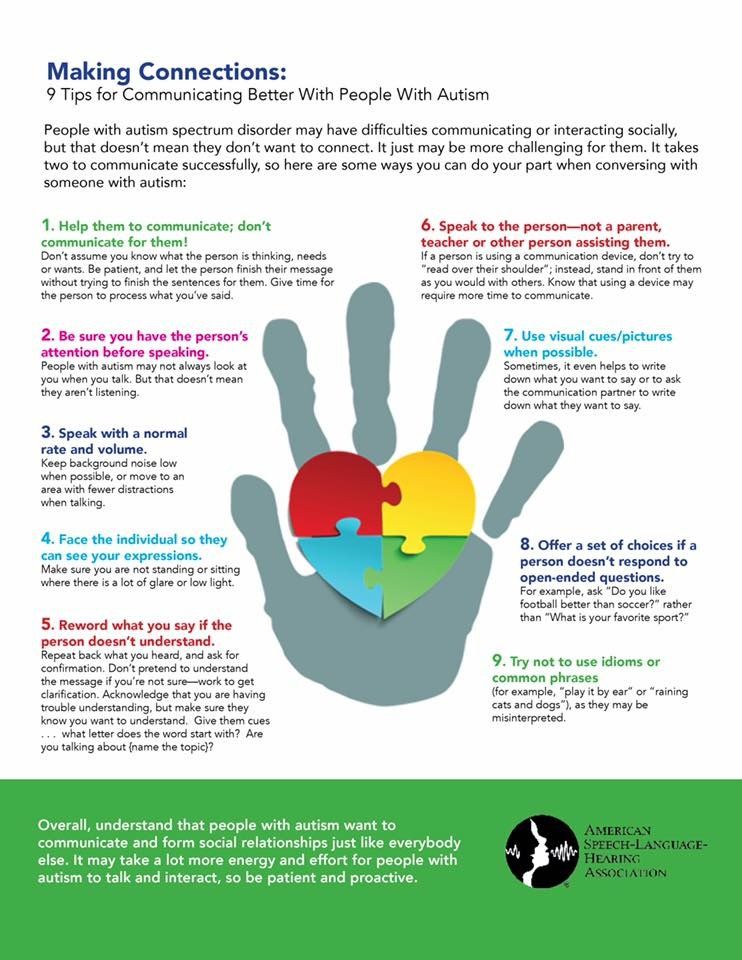 It is also necessary to note the condition of the early onset of these symptoms (up to about 2.5 years)
It is also necessary to note the condition of the early onset of these symptoms (up to about 2.5 years)
It manifests itself in children in 4 forms, depending on the degree of fencing off from the outside world:
Complete detachment from what is happening. This group is characterized by the absence of speech and the inability to organize the child (to establish eye contact, to achieve the implementation of instructions and assignments). When trying to interact with the child, he shows the greatest discomfort and impaired activity.
Active rejection. It is characterized by more active contact with the environment than the first group. There is no such detachment, but there is rejection of a part of the world that is unacceptable to the child. The child shows selective behavior (in communication with people, in food, in clothes)
Preoccupation with autistic interests. It is characterized by the formation of overvalued addictions (for years a child can talk on the same topic, draw the same plot).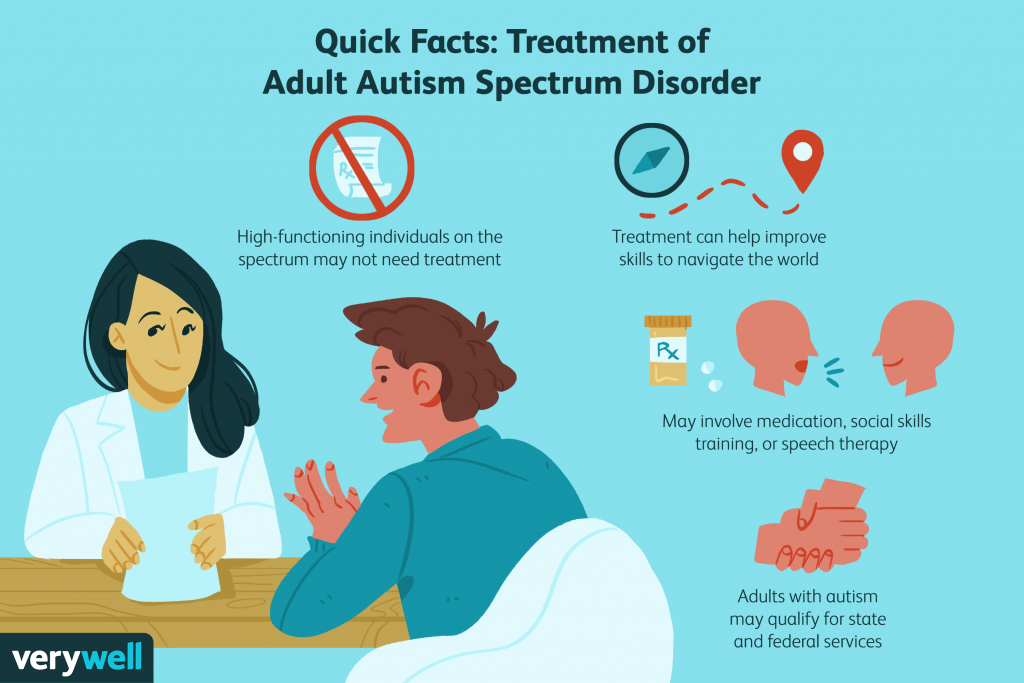 The gaze of such children is directed at the face of a person, but they look "through" this person. Such children enjoy the stereotyped reproduction of individual impressions.
The gaze of such children is directed at the face of a person, but they look "through" this person. Such children enjoy the stereotyped reproduction of individual impressions.
Extreme difficulty in organizing communication and interaction. Autism at its mildest. Children are characterized by increased vulnerability, contact with the world stops at the slightest sensation of obstacles. These children can make eye contact.
- Asperger's Syndrome. Formed from birth. Children have an early onset of speech development, a rich vocabulary, developed logical thinking, and there are no disorders in mental development. But at the same time, the communicative side of speech suffers: such children do not know how to establish contact with other people, do not listen to them, can talk to themselves, do not keep a distance in communication, and do not know how to empathize with other people.
- Rett syndrome. Its peculiarity lies in the fact that the development of a child up to 1-1.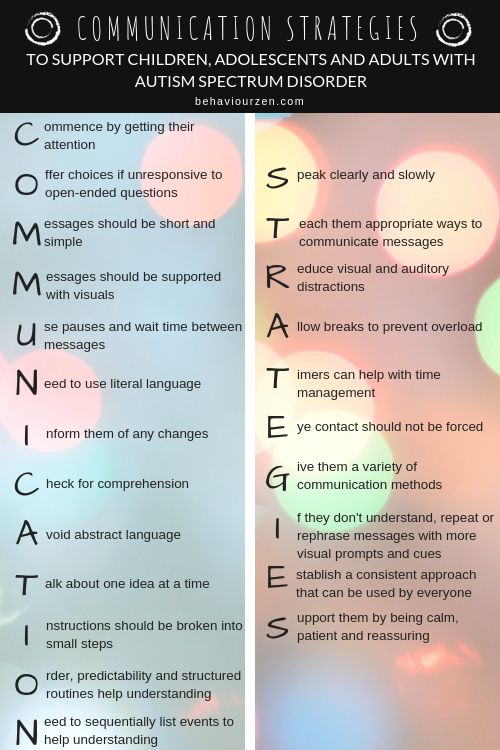 5 years proceeds normally, but then the newly acquired speech, motor and subject-role skills begin to disintegrate. Characteristic for this condition are stereotypical, monotonous movements of the hands, rubbing, wringing, while not carrying a purposeful character. The rarest of the presented diseases, occurring almost always only in girls.
5 years proceeds normally, but then the newly acquired speech, motor and subject-role skills begin to disintegrate. Characteristic for this condition are stereotypical, monotonous movements of the hands, rubbing, wringing, while not carrying a purposeful character. The rarest of the presented diseases, occurring almost always only in girls.
- Childhood psychosis. The first manifestation of symptoms before 3 years of age. It is characterized by violations of social behavior, communication disorders. There are stereotypes in behavior (children run in a monotonous circle, sway while standing and sitting, fingering their fingers, shaking their hands). These children have eating disorders: they can swallow food without chewing. Their unclear speech can sometimes be an incoherent collection of words. There are times when children freeze in place, like dolls.
- Atypical autism. It differs from autism in terms of age manifestation and the absence of one criterion from the “triad” of major disorders.
Correction of patients with ASD
One of the most important sections of habilitation for children with ASD is undoubtedly the provision of psycho-correctional and social rehabilitation assistance, with the formation of social interaction and adaptation skills. Comprehensive psycho-correctional work, which includes all sections and types of rehabilitation assistance, which will be described below, is, along with drug therapy, an effective means of stopping the negative symptoms of ASD, and also contributes to the normal inclusion of the child in society. Types of RAS correction:
1) Psychological correction - the most common and well-known type; It is characterized by a fairly wide range of methods, of which the TEACCH and ABA-therapy programs are most widely used and recognized in the world.
The first program is based on the following principles:
- The characteristics of each individual child are interpreted on the basis of observations of him, and not from theoretical ideas;
- increasing adaptation is carried out both by learning new skills and by adapting existing ones to the environment;
- Creation of an individual training program for each child; use of structured learning; holistic approach to intervention.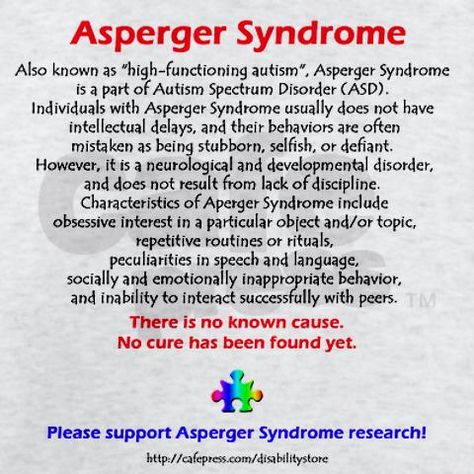
The second program is largely based on learning, which depends on the consequences that have arisen after the behavior. Consequences can be in the form of punishment or reward. In this model, it is necessary to highlight the main methods, such as the procedure for creating a contour and reinforcing behavior similar to the target; method of teaching chains of behavior; method of teaching discrimination of stimuli.
2) Neuropsychological correction - this type includes a set of exercises consisting of stretching, breathing, oculomotor, facial and other exercises for the development of the communicative and cognitive sphere, and the exercises themselves differ markedly in time and quantity.
3) Work with the child's family and environment - first of all, this type of correction is aimed at alleviating emotional tension and anxiety among family members, since parents of children with ASD often also need help, including psychotherapeutic support and training programs (such programs are mainly aimed at developing feelings of understanding of the problem, the reality of its solution and the meaningfulness of behavior in the current family situation).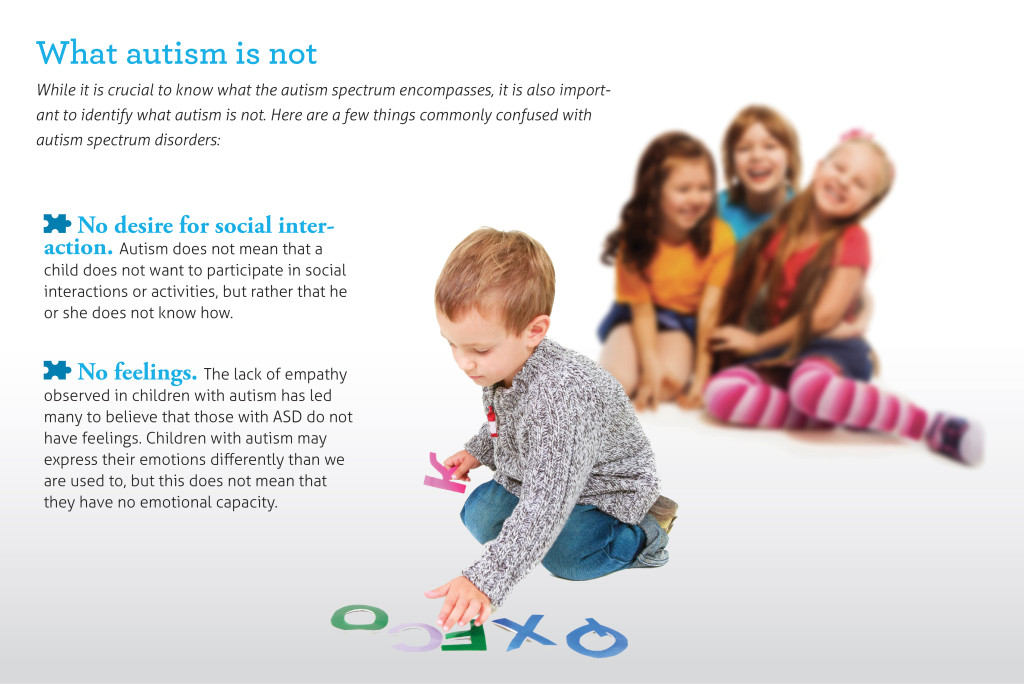
4) Psychosocial therapy - in fact, work with the child himself to form the cognitive, emotional and motivational-volitional resources of the individual for the possibility of further social adaptation, the need for which becomes more pronounced as the child with ASD grows older.
5) Logopedic correction - given the fact that speech development disorder is one of the cardinal manifestations of ASD, this type of work with a child will be an integral part of the correction program. It is characterized by a focus on the formation of vocabulary, the development of auditory attention, as well as phonetic and speech hearing.
6) Medical correction of RAS. In some forms of autism, medication is needed for the child. For example, to improve concentration and perseverance, a doctor may prescribe vitamins and nootropic drugs that improve thinking processes and stimulate speech development. And with high impulsivity, aggression, negativism, pronounced signs of "withdrawal into oneself", psychotropic drugs can help.